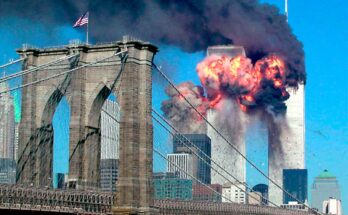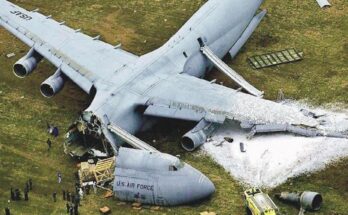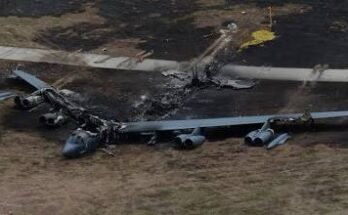
A tragic accident struck the U.S. Navy’s elite Blue Angels flight demonstration team when one of their F/A-18 Hornet jets crashed, claiming the life of the pilot. The crash, which occurred during a routine training exercise, sent shockwaves through the military aviation community and beyond. The Blue Angels, known for their precise and breathtaking aerial performances, are among the most skilled pilots in the world, making this loss particularly devastating.
The Incident: What Happened?
The fatal crash took place during a scheduled training flight as the Blue Angels prepared for an upcoming airshow. Witnesses reported that the jet was executing a maneuver when it suddenly lost control and nosedived into the ground. The crash resulted in a fiery explosion, leaving no chance of survival for the pilot.
Emergency responders rushed to the scene, but there was little they could do. The U.S. Navy later confirmed the pilot’s death, expressing condolences to the family and the Blue Angels team. The identity of the pilot was initially withheld out of respect for the family, but tributes quickly poured in from fellow service members, veterans, and aviation enthusiasts.
The Blue Angels: Icons of Precision and Excellence
The Blue Angels have been the face of U.S. naval aviation since their founding in 1946. Performing jaw-dropping aerial stunts, tight formations, and high-speed maneuvers, they serve as ambassadors for the Navy and Marine Corps, inspiring future generations of pilots.

Aviation
Flying the F/A-18 Hornet, Blue Angels pilots train rigorously to master extreme maneuvers that demand split-second decision-making and absolute coordination. Their performances highlight the skill, discipline, and dedication required to be among the best pilots in the world. However, the risks involved in flying at such high speeds and close proximity cannot be underestimated.
Possible Causes and Investigation
Following the crash, the U.S. Navy launched a thorough investigation to determine the cause of the accident. While the exact reason remains unclear, several possibilities are being considered:
1. Mechanical Failure – Aircraft malfunctions, though rare in well-maintained military jets, can still occur. Investigators are assessing whether a critical system failure led to the loss of control.
2. Pilot Error – Even the most experienced pilots can make split-second miscalculations. Investigators will review flight data and cockpit recordings to determine if human factors played a role.
3. G-Force-Induced Loss of Consciousness (G-LOC) – Blue Angels pilots endure extreme G-forces during high-speed turns and vertical maneuvers. If the pilot lost consciousness due to excessive G-forces, it could have caused the jet to crash.
4. Weather and Environmental Factors – Wind turbulence, sudden gusts, or visibility issues could have affected the aircraft’s stability, though weather conditions were reportedly normal at the time of the incident.
The final investigation report will provide crucial insights into what led to this tragedy and how similar accidents can be prevented in the future.
Impact on the Aviation and Military Community
The loss of a Blue Angels pilot is deeply felt across the aviation and military communities. These pilots represent the highest levels of skill and dedication, and their commitment to excellence inspires countless aspiring aviators.
In the wake of the accident, the Blue Angels temporarily suspended flight operations to allow their team to grieve and ensure that all aircraft and safety protocols are thoroughly reviewed. While such tragedies are rare, they serve as reminders of the inherent risks that come with flying high-performance jets.
Honoring the Fallen Pilot
The pilot who lost their life was not just a skilled aviator but also a dedicated service member committed to showcasing the power and precision of naval aviation. Colleagues, friends, and fans honored their sacrifice, emphasizing their bravery and passion for flying.
A memorial service was planned to pay tribute to the fallen pilot, with military officials, fellow Blue Angels members, and aviation enthusiasts coming together to remember their contributions. The U.S. Navy reaffirmed its commitment to ensuring the safety of all its pilots and maintaining the legacy of excellence that the Blue Angels represent.

Conclusion
The tragic crash of a Blue Angels F/A-18 Hornet is a heartbreaking reminder of the dangers that military pilots face in their pursuit of precision and excellence. As investigations continue, the focus will be on learning from this incident to enhance safety measures and prevent future tragedies.
Despite the risks, the Blue Angels remain a symbol of courage, skill, and dedication. Their performances inspire millions, and the memory of the fallen pilot will live on in the hearts of those who admired their talent and sacrifice. The skies will feel their absence, but their legacy will continue soaring with every breathtaking maneuver the Blue Angels perform.


